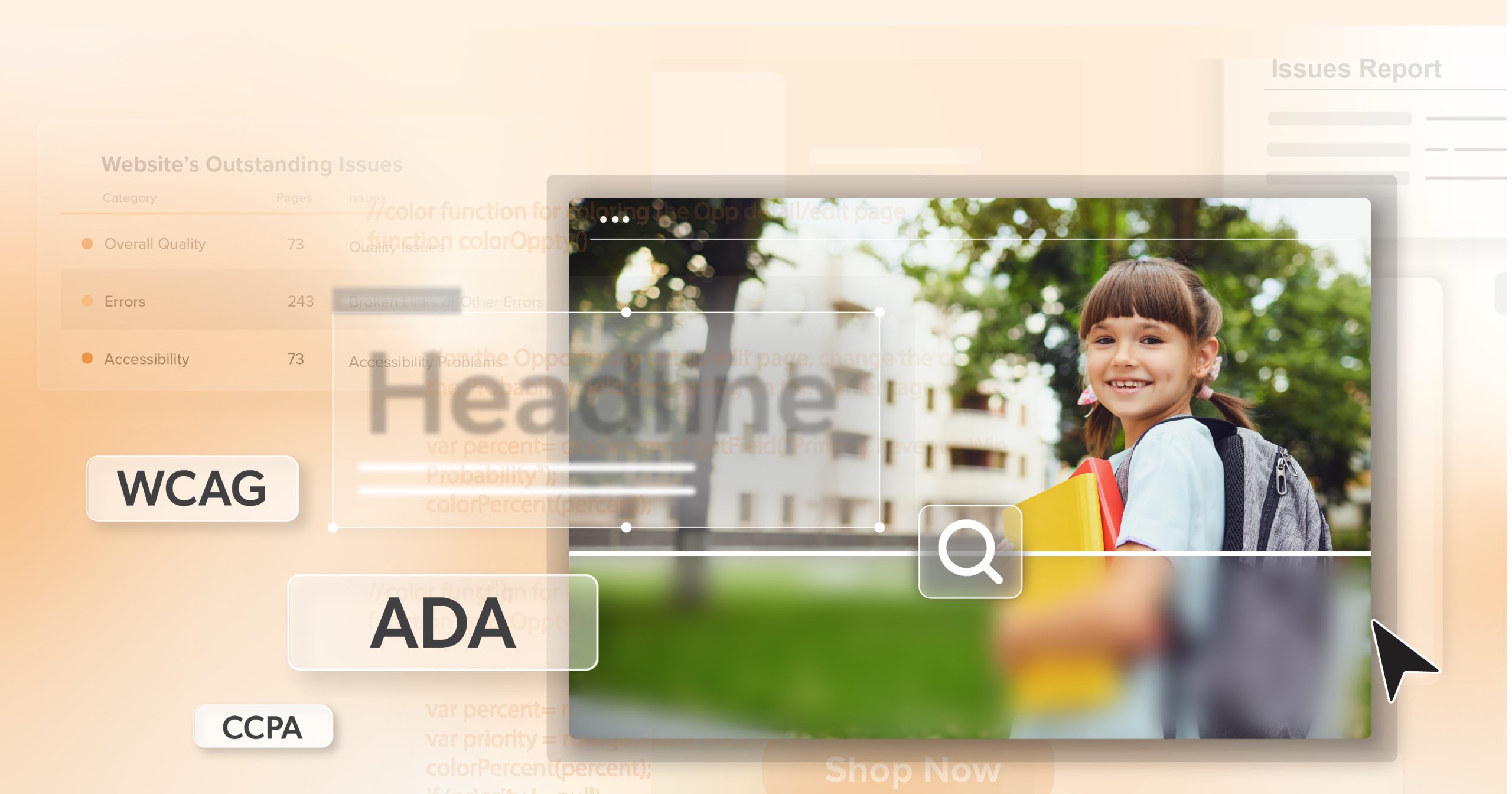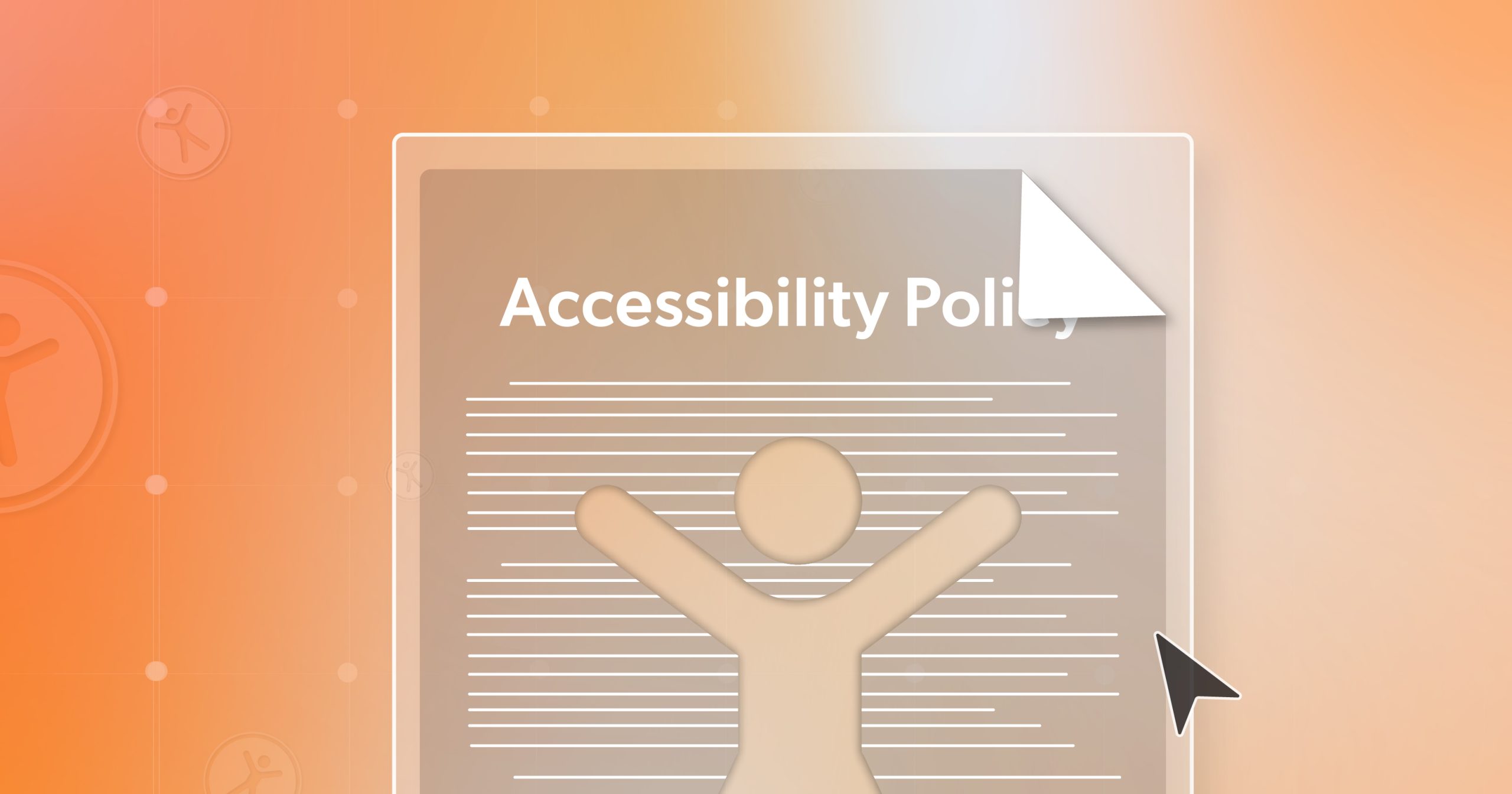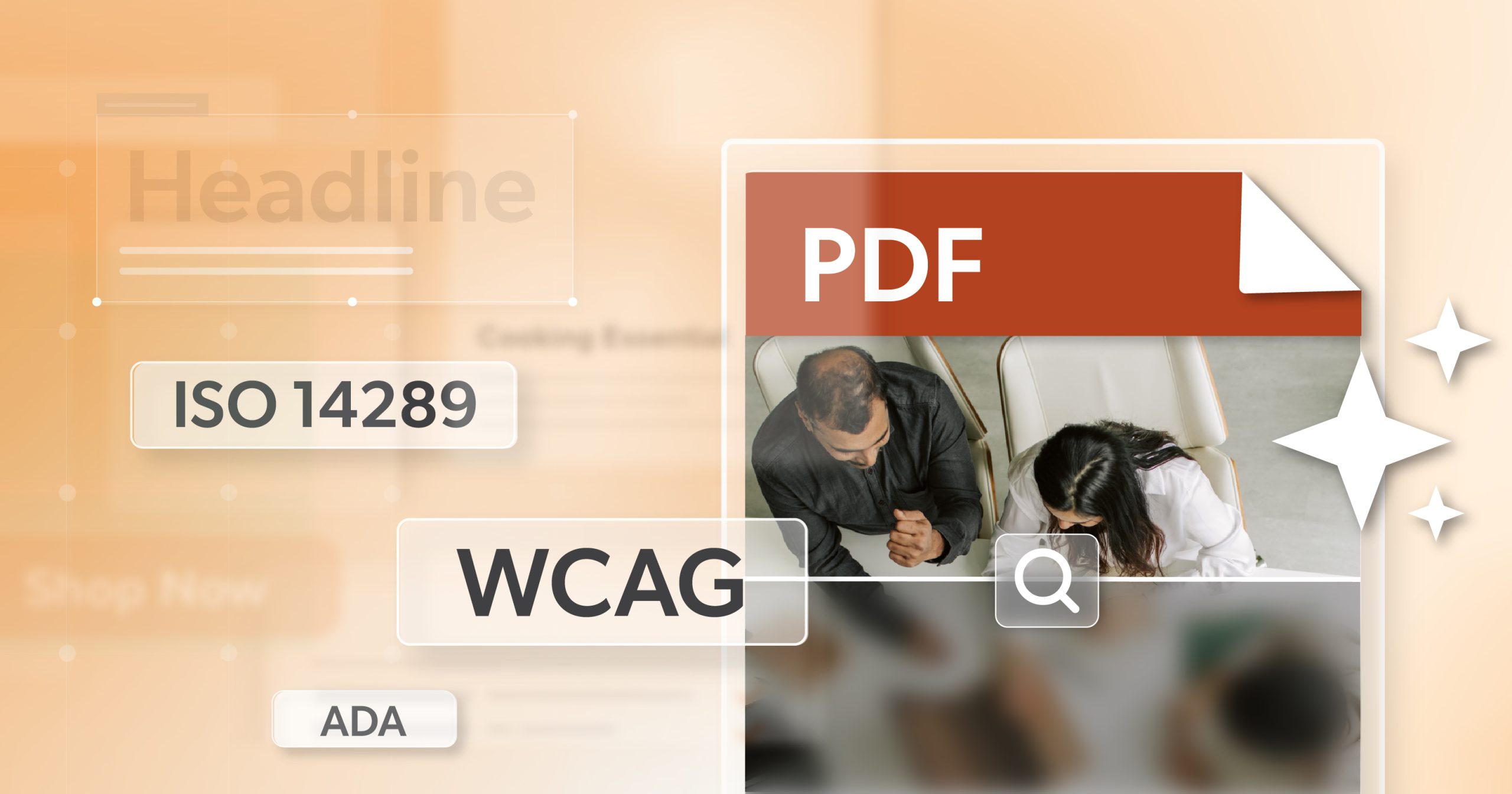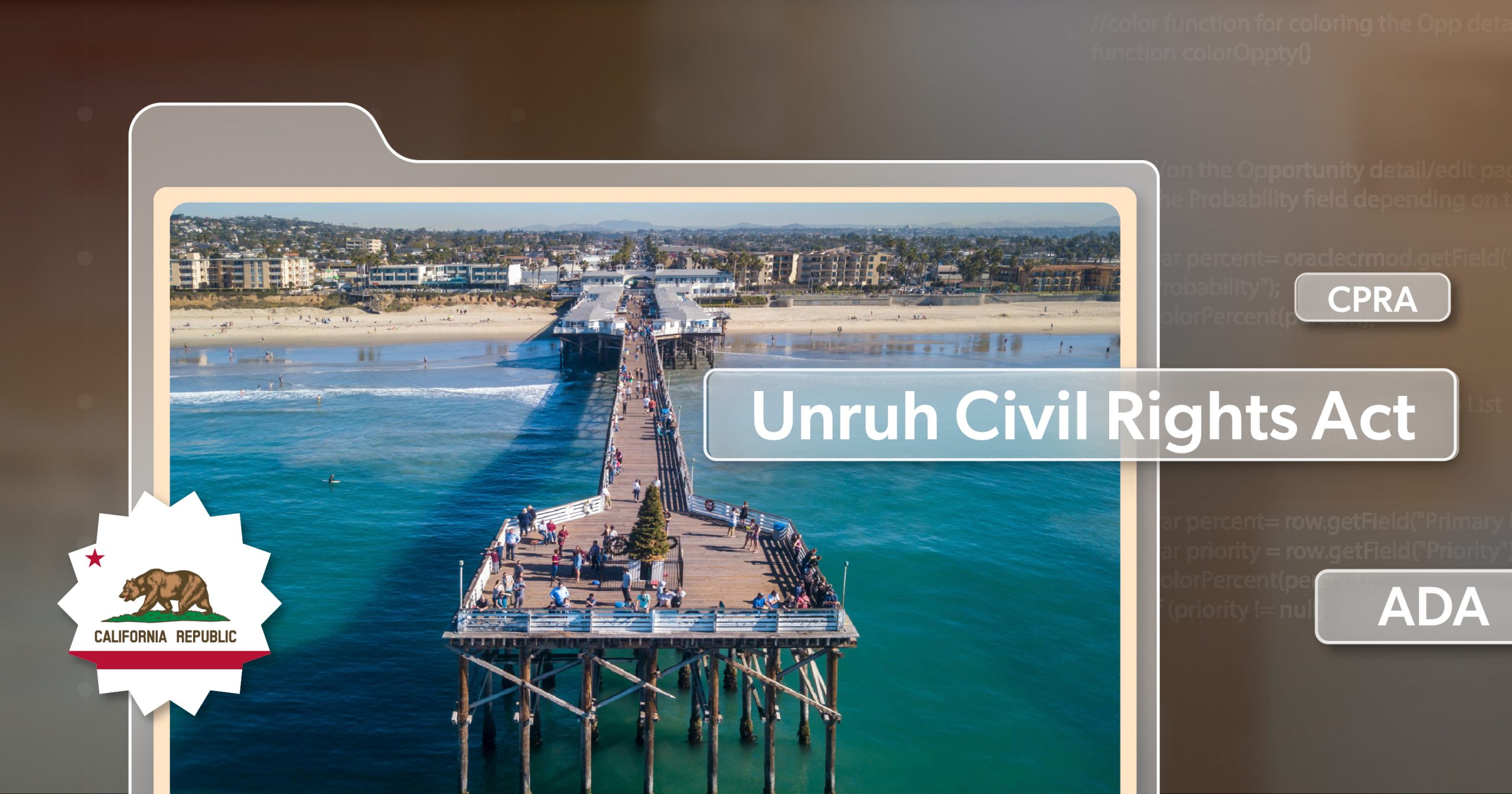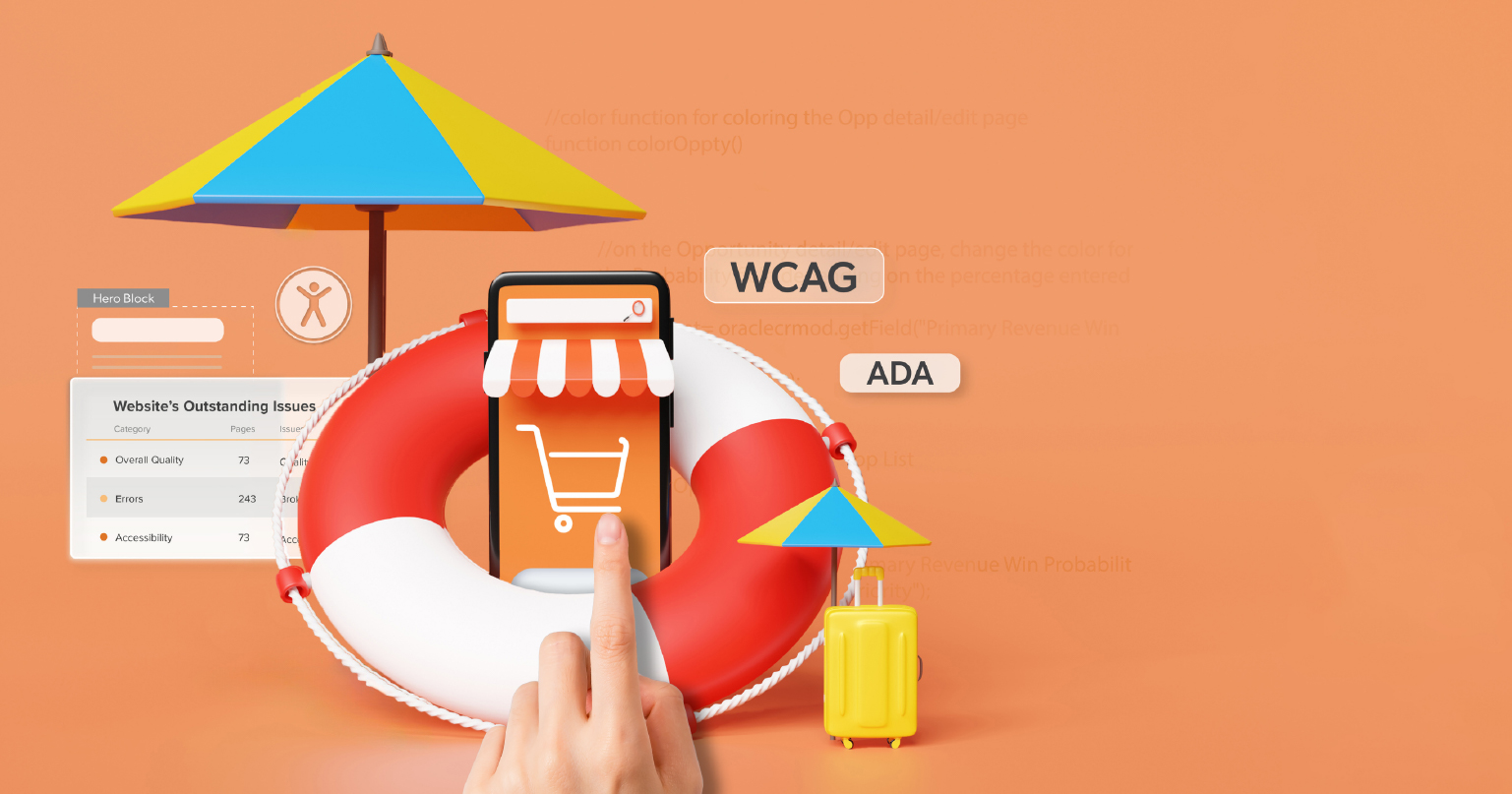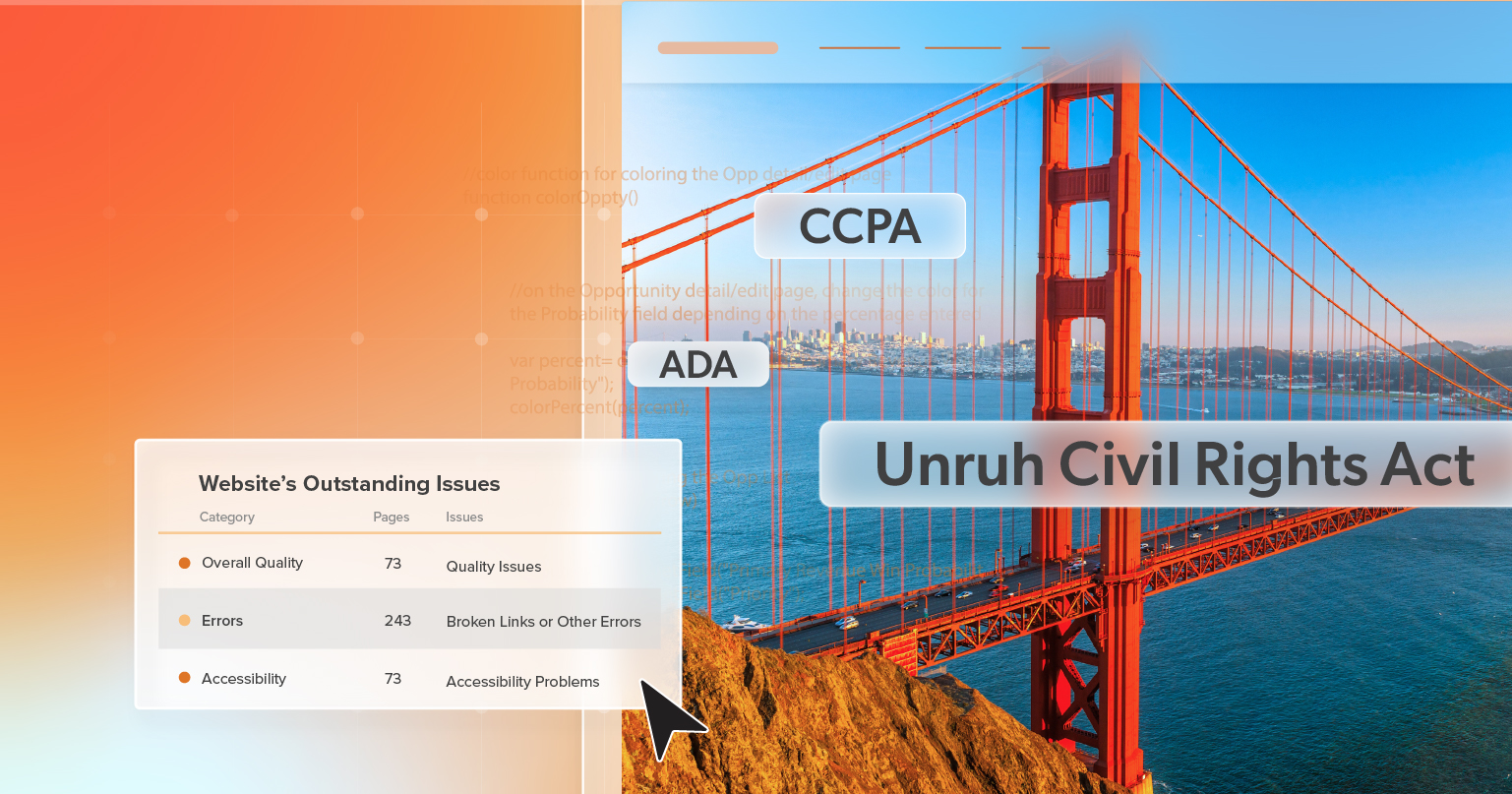Digital compliance isn’t one-size-fits-all. Depending on your organization’s goals, you may need an accessibility audit, a Voluntary Product Accessibility Template (VPAT®), or both. The real challenge is matching the deliverable to the job in front of you. If you’re navigating ADA, Section 508, WCAG, EN 301 549, or enterprise procurement requirements, understanding how audits and VPATs differ—and how they work together—can save time, reduce risk, and strengthen your position in competitive markets.
This guide explains what accessibility audits and VPATs are, how they differ, when to use each, and how they can complement one another.
What Is an Accessibility Audit?
An accessibility audit is a deep, hands-on evaluation of your digital product—website, web app, mobile app, software, or document—against recognized standards such as WCAG 2.1/2.2 Level AA and, when applicable, Section 508. Although automation has a role, a credible audit centers on expert manual testing and real-world use.
A typical audit blends three modes of evaluation that build on one another:
- Automated triage to surface easy-to-spot patterns (e.g., missing alt text, color contrast flags, form input associations) and help size the work.
- Expert manual review of templates, components, and user flows against WCAG success criteria, including focus management, semantics/landmarks, ARIA usage, error handling, and dynamic states.
- Assistive technology and keyboard testing to validate actual usability—screen readers (e.g., NVDA/JAWS/VoiceOver), zoom and reflow, high-contrast modes, and full keyboard operation.
Strong audits don’t stop at a list of defects. They provide actionable guidance: prioritized findings, severity and user impact, code-level recommendations, component-level patterns, and a retest plan. Many organizations also incorporate user testing with people with disabilities to capture lived-experience insights that technical checks alone can miss. The result is a roadmap your team can execute—not just a scorecard.
What Is a VPAT?
A VPAT® is a standardized disclosure that becomes your Accessibility Conformance Report (ACR). It doesn’t test; it reports what testing found. Each criterion is mapped to a status—Supports, Partially Supports, or Does Not Support—with remarks that define versions, platforms, assistive-technology pairings, and known limits. Choose the correct edition (WCAG, Revised Section 508, EN 301 549, International), date-stamp the ACR, and clearly state the product and environment scope. A defensible VPAT is evidence-backed—ideally by a recent audit plus targeted verification on the declared platforms.
In short: an audit discovers and validates; a VPAT declares and documents.
Accessibility Audit vs VPAT: Key Differences
| Aspect | Accessibility Audit | VPAT (ACR) |
|---|---|---|
| Primary purpose | Identify issues; deliver remediation guidance; validate usability | Communicate conformance status to buyers and regulators |
| Audience | Internal teams: product, engineering, design, compliance | External stakeholders: procurement, clients, regulators |
| Format | Narrative report with prioritized findings and fixes | Standardized template leading to an ACR with criterion-by-criterion statements |
| Evidence | Manual/AT testing, sometimes user testing with people with disabilities, plus automation | Summaries of conformance based on testing evidence |
| Timing | Best before launch/redesign, after significant releases, or upon risk events | Best during RFPs, renewals, market entry, or when a contract requires it |
| Outcome | Improved accessibility and user experience | Procurement-ready disclosure and contractual clarity |
| Update cadence | With each major release or accessibility milestone | Whenever scope, features, or conformance materially change |
With the differences in view, here’s how to use each deliverable at the right moment.
When to Have an Accessibility Audit
An audit should come before you make broad claims of compliance. It is the groundwork that ensures your product meets the standards you plan to cite.
Consider commissioning an audit when you are:
- Preparing for launch or a major redesign. Early findings are cheaper to fix and easier to standardize into reusable components.
- Responding to risk. If you’ve received a complaint, demand letter, or internal escalation, an audit clarifies actual exposure and prioritizes remediation.
- Improving product quality. Teams aiming to raise UX quality for everyone—faster task completion, fewer errors, better forms—use audits to remove barriers that frustrate all users, not only those with disabilities.
- Planning a VPAT. If a VPAT is on the horizon, a current audit supplies the evidence and remarks you’ll need to make defensible statements.
Without an audit, a VPAT can drift into guesswork—an avoidable liability in regulated procurement.
When to Have a VPAT Prepared
A VPAT becomes essential when you need formal proof of accessibility for sales, purchasing, or funding.
Typical triggers include:
- RFPs and vendor onboarding in government, higher education, healthcare, and large enterprise.
- Contract renewals or marketplace listings where accessibility is non-negotiable.
- International expansion that introduces EN 301 549 or other jurisdictional requirements.
Treat the VPAT/ACR as a living document. Update it after major releases, platform additions, or meaningful improvements so procurement teams see a current and accurate picture.
Decision rule: If an external party will evaluate your conformance (RFP, renewal, marketplace, grant), you’ll need an ACR (VPAT) grounded in a current audit; otherwise start with the audit alone.
Do You Need Both?
In regulated or enterprise procurement, the default answer is yes. If you are selling to government, higher education, healthcare, or large enterprises—or you intend to make public conformance claims—you need both an audit and a VPAT (ACR). The audit establishes factual evidence of how the product performs against WCAG/Section 508 in real use. The VPAT communicates that evidence in the standardized format buyers expect.
As a rule of thumb: use an audit to know; use a VPAT to show. When disclosure is part of sales, renewals, or public listings, sequence your work as audit, remediate, then prepare the VPAT so statements are current, precise, and defensible.
Once you know when to use each, it helps to see how they reinforce one another.
How They Reduce Risk Together
Audits and VPATs mitigate different classes of risk that often compound if handled in isolation. The audit reduces product and legal risk by finding and prioritizing barriers before they become complaints or claims and by providing implementable fixes. It also creates a repeatable testing pattern—templates, flows, and assistive-technology pairings—that your team can reuse release after release.
The VPAT reduces commercial and contractual risk. It removes friction in procurement, sets accurate expectations about platforms and known limits, and documents the scope under which conformance was verified. Procurement teams look for alignment between your ACR remarks and the audit artifacts. When those line up—versions, dates, and assistive
technologies—friction drops and credibility increases. Working together, the audit improves the thing; the VPAT aligns the promise. That alignment closes the gap between user reality and contractual language—the place most disputes arise.
Practical Scenarios
Federal RFP: You need both. Commission an audit covering the exact scope in the RFP (versions, browsers, AT). Remediate high-impact issues, verify fixes, then publish a VPAT/ACR that cites that evidence with precise remarks.
Small e-commerce: Prioritize the audit. Focus on core purchase flows and forms, implement fixes, and establish a light retest cadence. Skip the VPAT until an enterprise buyer or marketplace explicitly requests one.
University adoption: The buyer will require a VPAT from the vendor. A responsible vendor conducts an audit first, then produces a VPAT grounded in that evidence.
Monthly SaaS cadence: Establish a rhythm: periodic audits on shared components and critical journeys; targeted verification after impactful changes; VPAT updates tied to material shifts in scope or before major renewals. Keep the VPAT’s scope and dates synchronized with your latest audit window.
Final Thoughts
Accessibility audits and VPATs aren’t interchangeable; they serve different, complementary purposes. The audit digs into how your product actually behaves and shows you how to fix issues. The VPAT communicates that conformance in a format procurement teams trust. Organizations that treat the VPAT as living, evidence-based disclosure—and audits as an ongoing quality practice—build trust, reduce risk, and win more consistently.
Ready to move from claims to confidence? Schedule an ADA briefing with 216digital—we’ll review your product context, prioritize a first sprint, and outline a clear path from audit and remediation to a defensible, procurement-ready ACR.


